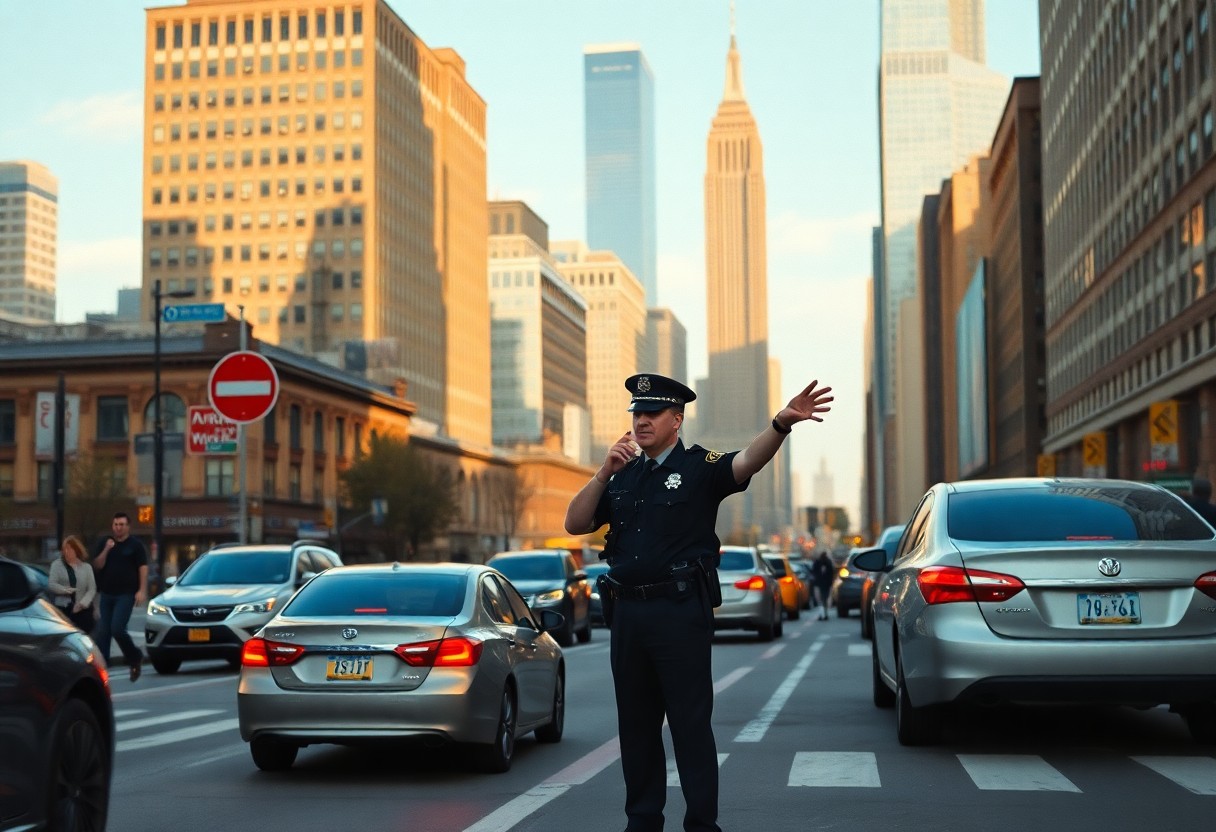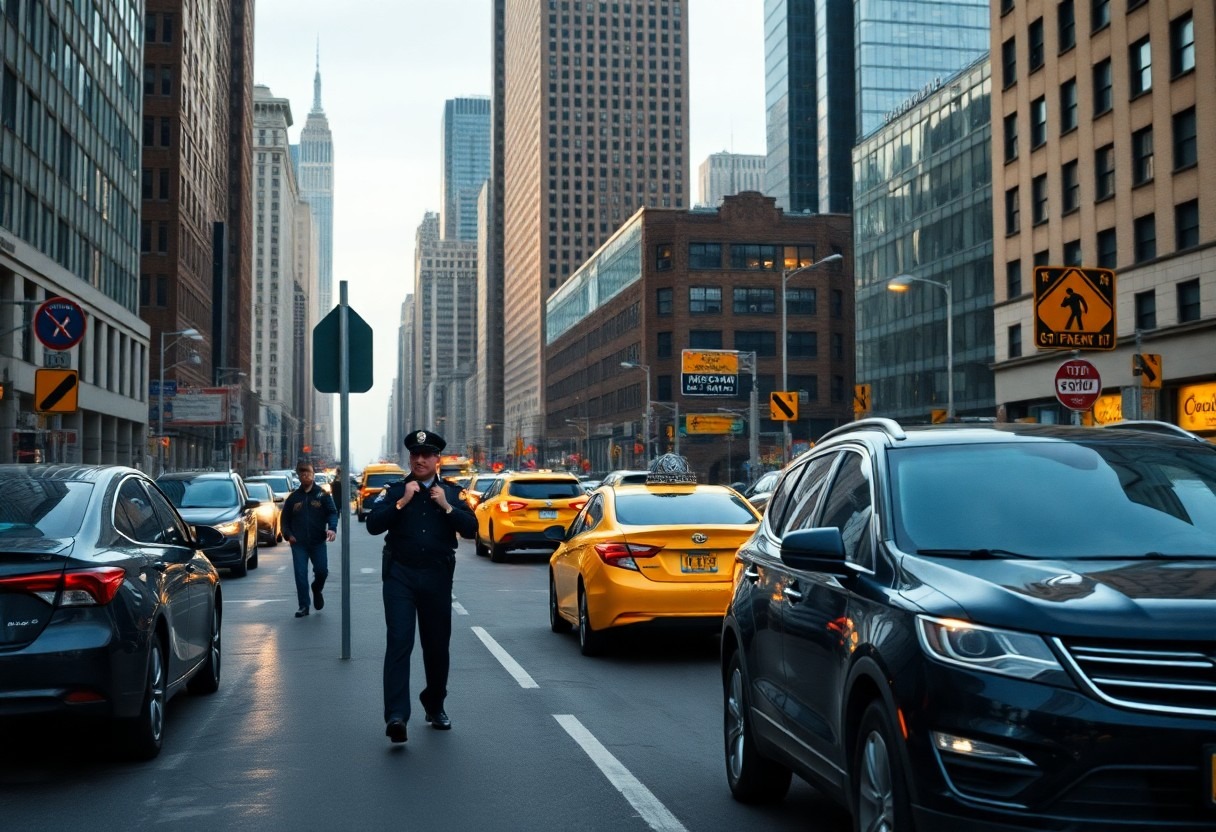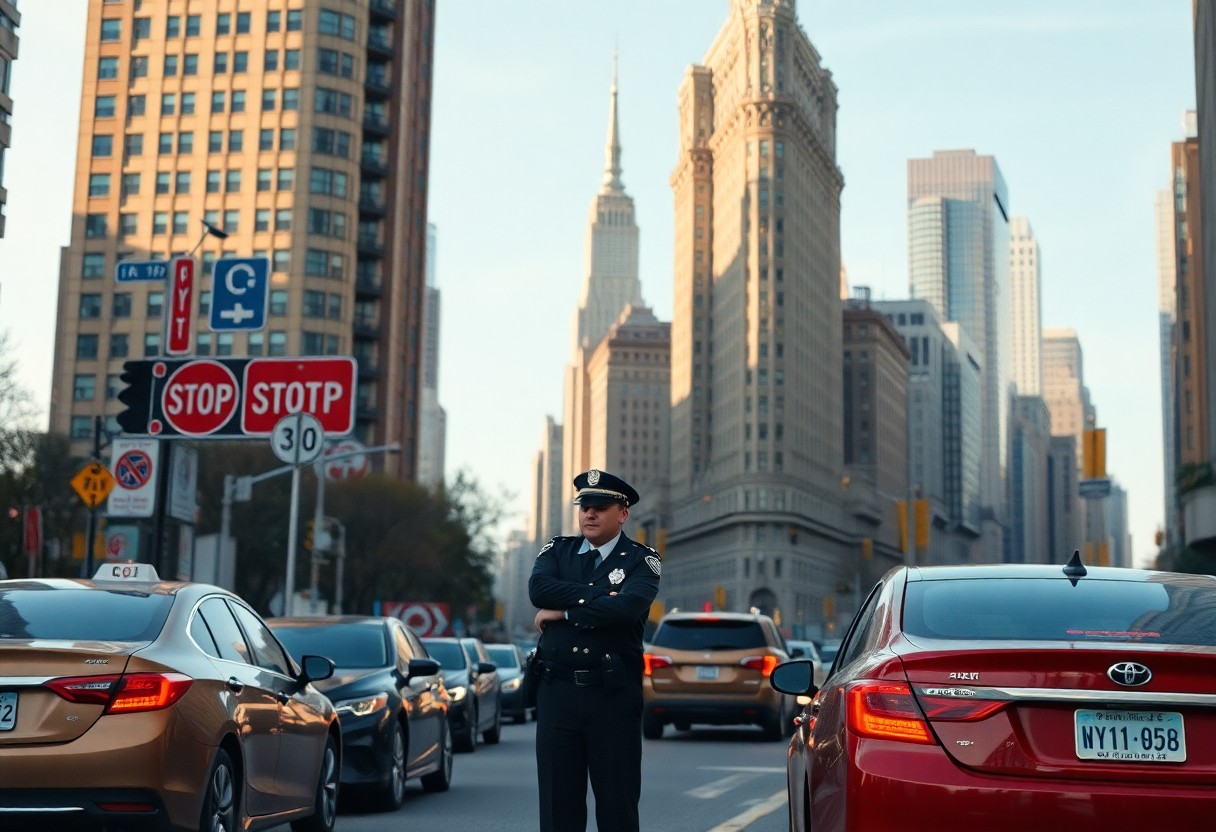To navigate the bustling streets of New York effectively, it is vital to understand the unique challenges associated with driving in this vibrant metropolis. Operating a vehicle in the Empire State requires adapting to heavy traffic conditions while strictly following traffic regulations that protect all road users. Familiarizing yourself with local driving laws is essential, such as the 25 mph speed limit in urban areas and the ban on handheld devices while driving. Whether you’re exploring the grid layout of Manhattan or enjoying the scenic routes of upstate New York, having a comprehensive understanding of New York’s driving laws will empower you to confidently navigate its diverse roadways and remain safe on New York’s dynamic streets.
Essential Driving Regulations Every New York Driver Must Follow
In New York, adhering to fundamental driving regulations is crucial for ensuring safety on the roads. You must always drive on the right side of the road and maintain a safe distance from the vehicle ahead while using turn signals when changing lanes. Your vehicle should be well-equipped with functional headlights, taillights, and brake lights to enhance visibility and effectively communicate your intentions to other drivers. Remember, seat belts are mandatory for all passengers, while children under eight years old must be secured in appropriate restraint systems. These rules not only promote your safety but also contribute to a more responsible and aware driving culture across the state.
Mastering Speed Limits and Traffic Signal Compliance in New York
Speed limits in New York are not uniform; they vary significantly depending on the location. The 25 mph speed limit is the default in New York City unless otherwise indicated by posted signs, while highways typically permit speeds ranging from 55 to 65 mph. It is crucial to come to a complete stop at red lights and stop signs, as doing so is a fundamental aspect of safe driving. In New York City, right turns on red are prohibited unless specifically permitted by a sign. Furthermore, intersections and school zones are closely monitored by traffic cameras to ensure compliance, highlighting the importance of being vigilant and adhering to all traffic signals for the safety of everyone on the road.
Prioritizing Pedestrian Safety and Understanding Right-of-Way Laws
In addition to standard traffic laws, it is imperative to always yield to pedestrians in crosswalks, regardless of whether the crosswalk is marked. This responsibility also extends to stopping for school buses with flashing red lights and yielding to emergency vehicles. Failing to yield to pedestrians can result in substantial fines and points on your license, which may negatively impact your driving record. Exercising extra caution in school zones and residential areas is essential due to the higher volume of pedestrian traffic. Remember, pedestrians have the right-of-way when crossing with the signal, and drivers must remain stopped until they have completely crossed the street. It is also important to avoid blocking crosswalks or intersections, even temporarily, to ensure the safety of all road users.
Moreover, it’s vital to acknowledge that the responsibility for pedestrian safety primarily lies with drivers, particularly in areas with heavy foot traffic. This means being particularly attentive during peak hours when children are arriving or departing from school. Always keep an eye out for pedestrians who may unexpectedly enter the roadway, and be prepared to stop. By prioritizing pedestrian safety, you contribute significantly to creating a secure driving environment for everyone.
Ensuring Vehicle Compliance and Safety Standards
Before you venture onto the bustling streets of New York, it is essential that your vehicle meets specific state requirements to ensure both safety and compliance. Regular maintenance is key, including ensuring that your car has functional headlights, properly inflated tires, and well-maintained brakes. The New York Department of Motor Vehicles (DMV) mandates annual safety inspections for all registered vehicles to confirm that they meet established safety standards, which is crucial for the well-being of all drivers and passengers on the road. Staying compliant with these requirements not only helps you avoid penalties but also enhances your vehicle's performance and reliability, making your driving experience more enjoyable.

Understanding Registration and Insurance Requirements in New York
Every vehicle operating legally in New York must have the correct documentation, which includes maintaining minimum liability insurance coverage of $25,000/$50,000 for bodily injury and $10,000 for property damage. Keeping your vehicle registration current is also vital, and you must display valid inspection stickers on your windshield as proof of compliance. Failure to meet these requirements can lead to significant fines and even license suspension, complicating your ability to drive legally. By ensuring that all necessary documentation is in order, you protect yourself against potential legal issues and ensure a smoother driving experience throughout the state.
Meeting New York's Safety Equipment Standards for Your Vehicle
In addition to registration, ensuring that your vehicle meets New York's safety equipment standards is crucial for legal operation. Your vehicle must be equipped with functioning headlights, brake lights, turn signals, and windshield wipers to enhance visibility and facilitate communication with other drivers. The state also mandates that vehicles have functional seat belts, mirrors, and a horn. These safety measures are essential for protecting both your safety and that of others on the road. Furthermore, New York’s equipment regulations extend beyond basic requirements, including maintaining proper emission standards and undergoing regular smog checks to minimize environmental impact. Regularly checking these components will help ensure that your vehicle is safe and compliant.
Moreover, it is important to regularly inspect your vehicle for adequate tire tread depth, properly functioning brakes, and working defrosters to prepare for varying weather conditions. Additionally, having emergency equipment such as hazard lights and reflectors readily available is essential for unexpected situations. By adhering to these safety equipment standards, you not only comply with the law but also contribute to a safer driving environment for everyone on the road.

Adapting to Special Zones and Local Driving Restrictions
When driving in New York, exercising extra caution and adhering to specific local regulations in designated zones is crucial. Certain areas, such as school zones, construction zones, and residential neighborhoods, come with their own set of rules that must be strictly followed. Violating regulations in these areas can lead to significant fines, ranging from $90 to $600, depending on the severity of the infraction. Understanding and respecting these local rules is vital for ensuring the safety of all road users and maintaining a harmonious driving environment.
Staying Vigilant in School and Work Zones
School and work zones are among the most critical areas demanding your attention while driving. In these zones, you must reduce your speed to 15-20 mph during school hours, ensuring the safety of vulnerable pedestrians, particularly children. In work zones, adhering to posted speed limits and maintaining a safe distance from construction workers is essential. Fines for speeding in these areas are often doubled, underscoring the importance of heightened safety awareness. By remaining vigilant and following the rules in these zones, you play a crucial role in protecting those who are most at risk.
Crucial Parking Regulations to Avoid Unwanted Fines
Understanding the vital parking regulations in New York is essential to avoid unnecessary fines and inconveniences. Alternate-side parking regulations are enforced in most areas, and it is important to carefully observe posted signs indicating specific days and times for parking restrictions. Metered parking zones are widespread throughout the city, with rates varying by location and time of day, so it is important to always check the meter before leaving your vehicle. Additionally, you must abide by strict fire hydrant clearance rules (a minimum of 15 feet) and avoid no-standing zones near intersections.
Moreover, being aware of residential permit requirements in certain neighborhoods is critical to prevent parking violations. Failure to comply with these regulations can result in tickets ranging from $65 to $115, and your vehicle may be towed if it blocks essential services or creates safety hazards. Staying informed and compliant with parking regulations will save you from costly fines and ensure a smoother experience while driving in New York.
Meeting Driver’s License Requirements for Legal Driving in New York
Having a valid driver’s license is essential for legal driving in New York. To operate a vehicle, you must be at least 16 years old and possess either a New York State driver’s license or a valid out-of-state license. If you are a first-time driver, completing a state-approved driver education course and passing both written and road tests is mandatory. These requirements are designed to ensure that all new drivers are adequately prepared to navigate New York’s complex roadways with confidence and safety.
Understanding the Different Classifications of New York Driver’s Licenses
One of the most critical aspects of driving in New York is understanding the various license classifications. Class D is the standard license for passenger vehicles, while commercial driver’s licenses (CDL) range from Class A to C, each with specific privileges and restrictions regarding the types of vehicles you can legally operate. Knowing the differences in license classes is vital to ensure you have the proper credentials for the vehicle you intend to drive, thus avoiding legal issues and contributing to overall road safety.
Guidelines for Out-of-State License Holders Moving to New York
If you hold an out-of-state license, it remains valid for up to 30 days after establishing residency in New York. As a tourist or temporary resident, you can legally drive with your home state’s license. International visitors must possess a valid foreign license along with an International Driving Permit to drive legally in New York. Furthermore, specific rules apply to military personnel and their families, allowing them to maintain their home-state licenses while stationed in New York. If you become a permanent resident, you must exchange your out-of-state license within 30 days by visiting a DMV office and passing a written test to ensure compliance with state regulations.
Implementing Effective Safety Measures for a Secure Driving Experience
For your safety on New York roads, adhering to strict traffic regulations and maintaining constant awareness of your surroundings is paramount. Your vehicle should be equipped with essential safety features, including functional headlights, taillights, turn signals, and properly inflated tires. Regular vehicle maintenance is crucial for safe driving, especially considering New York’s demanding traffic conditions. By prioritizing these safety measures and ensuring your vehicle is in top shape, you can significantly reduce the risk of accidents and provide a safer driving experience for yourself and others.
Child Safety Requirements to Ensure Protection for Young Passengers
To safeguard young passengers, any child under eight years old must be secured in an appropriate child restraint system. Children under two years of age are required to ride in a rear-facing car seat, while those aged two to four must use a forward-facing car seat. For children aged four to eight, booster seats are necessary to ensure proper positioning and safety. Violations of these requirements can result in fines of up to $100 and three penalty points on your license. By enforcing these child safety measures, you actively contribute to the protection of our youngest and most vulnerable passengers on the road, helping to establish a culture of safety.
Seatbelt Regulations and Mobile Device Usage Compliance
To enhance safety for you and your passengers, mandatory seatbelt use for all vehicle occupants is enforced in New York. It is essential to ensure that everyone in the vehicle is buckled up, regardless of their seating position. The use of handheld devices while driving is strictly prohibited, with fines ranging from $50 to $450 for violations, depending on whether it is a repeat offense. Remember, even a momentary distraction can lead to severe consequences on New York roads, potentially endangering lives.
Your first violation of mobile device laws results in five driver violation points, and subsequent offenses may lead to license suspension. Although hands-free devices are permitted, it’s advisable to minimize their use to maintain focused attention on the road. By adhering to these regulations, you not only protect yourself but also contribute to the overall safety of the driving environment in New York.

Staying Informed About Traffic Violations and Their Consequences
Navigating New York’s traffic laws necessitates your constant vigilance and attention to detail. The city enforces strict compliance with traffic regulations, with violations leading to severe consequences. Understanding these rules is not solely about avoiding fines; it’s also critical for maintaining road safety for everyone involved. By being aware of potential infractions, you can significantly reduce your risk of accidents and legal issues, contributing to a safer driving environment.
Recognizing Common Traffic Infractions in New York
On New York streets, some of the most common violations include speeding (especially in school zones), running red lights, illegally using mobile phones, and making improper turns. The likelihood of enforcement is high, as the city employs both traditional police patrols and automated enforcement systems to monitor compliance. Recent statistics indicate that speed cameras alone issued over 4 million violations in 2022, highlighting the importance of adhering to speed limits and traffic signals to avoid penalties and ensure the safety of all road users.
Understanding the Consequences of Traffic Violations and Penalties
When it comes to penalties for traffic violations, first-time offenders may face fines ranging from $50 to $1,000, depending on the nature of the offense. The New York DMV operates on a point system, where accumulating 11 points within 18 months can lead to license suspension. Additionally, your insurance rates may significantly increase following any violations, impacting your financial standing. It’s important to recognize that New York employs a graduated penalty system, meaning that repeat offenses result in progressively severe consequences. Violations can remain on your driving record for up to four years, potentially affecting your insurance rates and driving privileges. The state’s zero-tolerance policy for DUI offenses can lead to immediate license suspension and mandatory court appearances, underscoring the need for responsible driving practices.
Key Takeaways for Safe Driving in New York
Driving in New York necessitates your full attention and compliance with a variety of specific regulations. Your safety, as well as that of others, relies on following speed limits, yielding to pedestrians, and ensuring proper child restraints. Through platforms like RentaCar24.org, you can find well-maintained vehicles that meet all safety requirements, allowing you to navigate the city with confidence. By staying informed about local traffic laws and keeping these essential guidelines in mind, you’ll be well-equipped to handle the challenges of New York’s busy streets. Understanding and respecting these regulations will contribute to a smoother and safer driving experience throughout the Empire State.
The Article: Driving in New York: Essential Rules and Regulations for Safe Travel appeared first on https://rentacar24.org/
The Article Essential Rules and Regulations for Safe Driving in New York Was Found On https://limitsofstrategy.com

Comments are closed